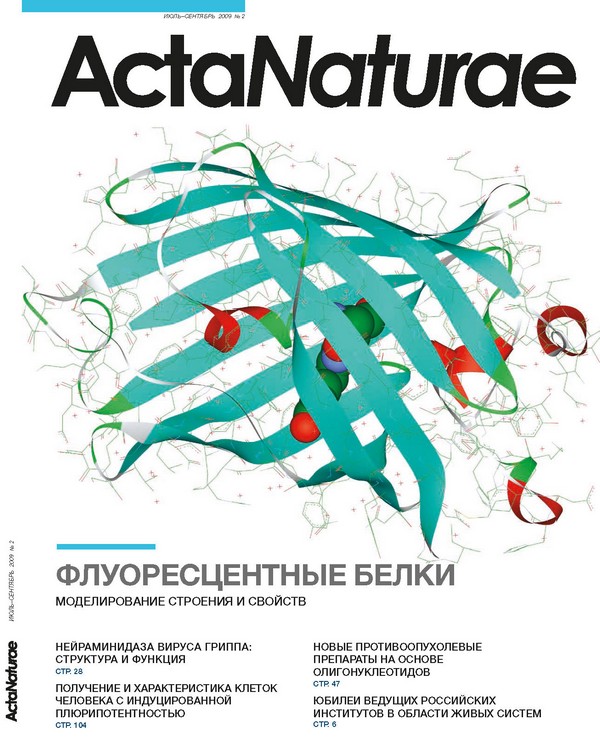Influence of pub gene Expression on Differentiation of Mouse Embryonic Stem Cells into Derivatives of Ecto-, Meso-, and Endoderm in vitro
- Authors: Novosadova EV1, Manuilova ES1, Arsenieva EL1, Lebedev AN1, Khaidarova NV1, Tarantul VZ1, Grivennikov IA1
-
Affiliations:
- Institute of Molecular Genetics, Russian Academy of Sciences
- Issue: Vol 1, No 2 (2009)
- Pages: 93-97
- Section: Articles
- URL: https://actanaturae.ru/2075-8251/article/view/10823
- DOI: https://doi.org/10.32607/20758251-2009-1-2-93-97
- ID: 10823
Cite item
Abstract
Full Text
An embryonic stem (ES) cell is a unique model to use for the investigation of the processes underway at the early stages of embryogenesis [1]. It is well known that in the course of in vivo embryo development, ES cells are able to form all three embryonic layers in culture – endoderm, mesoderm, and ectoderm – and, thus, all cell types developing from them. Analysis of gene expression in the process of ES cell differentiation into specialized cell types shows that the succession and efficiency of gene expression in the course of in vitro differentiation corresponds, as a whole, to the sequence of these processes in vivo [10]. Hence, ES cells may be used as an adequate experimental model for the investigation of molecular mechanisms at the initial stages of differentiation. Moreover, the investigations of ES cell differentiation in this or other directions in response to the action of specific inducers (growth factors, cytokines) or to direct the genetic modification of these cells make it possible to understand the functions of the investigated substances and different genes in this process [1]. In the previous investigations, we obtained and described cDNA clones characterized by intensive transcription in the HIV-associated immunoblastic lymphomas using the method of subtractive hybridization [16, 17]. An analysis of those cDNA allowed us to detect among them, along with the previously described genes (set, сalpain, etc.), several cDNA coding genes with previously unknown functions. One of such lymphoma-specific genes was then termed pub. The protein product of the human pub gene (hPub) is highly homological to the mouse Pub protein (mPub) [5].About the authors
E V Novosadova
Institute of Molecular Genetics, Russian Academy of SciencesAkad. Kurchatova Square 2, 123182 Moscow, Russia
E S Manuilova
Institute of Molecular Genetics, Russian Academy of SciencesAkad. Kurchatova Square 2, 123182 Moscow, Russia
E L Arsenieva
Institute of Molecular Genetics, Russian Academy of SciencesAkad. Kurchatova Square 2, 123182 Moscow, Russia
A N Lebedev
Institute of Molecular Genetics, Russian Academy of SciencesAkad. Kurchatova Square 2, 123182 Moscow, Russia
N V Khaidarova
Institute of Molecular Genetics, Russian Academy of SciencesAkad. Kurchatova Square 2, 123182 Moscow, Russia
V Z Tarantul
Institute of Molecular Genetics, Russian Academy of SciencesAkad. Kurchatova Square 2, 123182 Moscow, Russia
I A Grivennikov
Institute of Molecular Genetics, Russian Academy of Sciences
Email: igorag@img.ras.ru
Akad. Kurchatova Square 2, 123182 Moscow, Russia
References
- Grivennikov I.A. // Progress in Biological Chemistry. 2008. V. 48. P. 181-220.
- Novosadova E.V., Manuilova E.S., Arsenieva E.L., et al. // Cell Technologies in Biology and Medicine. 2005. N 3. P. 174-179.
- Novosadova E.V., Manuilova E.S., Arsenieva E.L., et al. // Yu.A. Ovchinnikov Bulletin of Biotechnology and Physicochemical Biology. 2005. V. 1. N 2. P. 14-21.
- Novosadova E.V., Manuilova E.S., Arsenieva E.L., et al. // Medical Genetics. 2008. N 8. P. 43-46.
- Dhoot G., Perry S. // Exp. Cell. Res. 1978. V. 117. P. 357–370.
- Fraichard A., Chassande O., Bilbaut G., et al. // J. Cell Sci. 1995. V. 108. P. 3181-3188.
- Holtzinger A., Evans T. // Development. 2005. V. 132. P. 4005–4014.
- Holtzinger A., Evans T. // Dev. Biol. 2007. V. 312. P. 613–622.
- Jiang Y., Henderson D., Blackstad M., et al. // Proc. Natl. Acad. Sci. U.S.A. 2003. V. 18. P. 11854-11860.
- Keller G. // Genes - Dev. 2005. V. 19. P. 1129-1155.
- Lloberas J., Solier C., Celada A. // Immunol. Today. 1999. V. 20. P. 184-189.
- Peterkin T., Gibson A., Patient R. // EМВО J. 2003. V. 22. P. 4260–4273.
- Peterkin T., Gibson A., Patient R. // Dev. Biol. 2007. V. 311. P. 623–635.
- Reiter J., Alexander J., Rodaway A., et al. // Genes Dev. 1999. V. 3. P. 2983–2995.
- Reymond A., Meroni G., Fantozzi A., et al. // EMBO J. 2001. V. 20. P. 2140-2151.
- Tarantul V.Z., Nikolaev A.I., Martynenko A., et al. //AIDS Res. Hum. Retroviruses. 2000. V. 16. Р. 173-179.
- Tarantul V., Nikolaev A., Hannig H., et al. // Neoplasia. 2001. V. 3. Р. 132-142.
- Torok M., Etkin L. // Differentiation. 2000. V. 67. P. 63-71.
- Zhao R., Watt A.J., Battle M.A., Li J., Bondow B.J., Duncan S.A. // Dev. Biology. 2008. V. 317. P. 614-619.
Supplementary files







